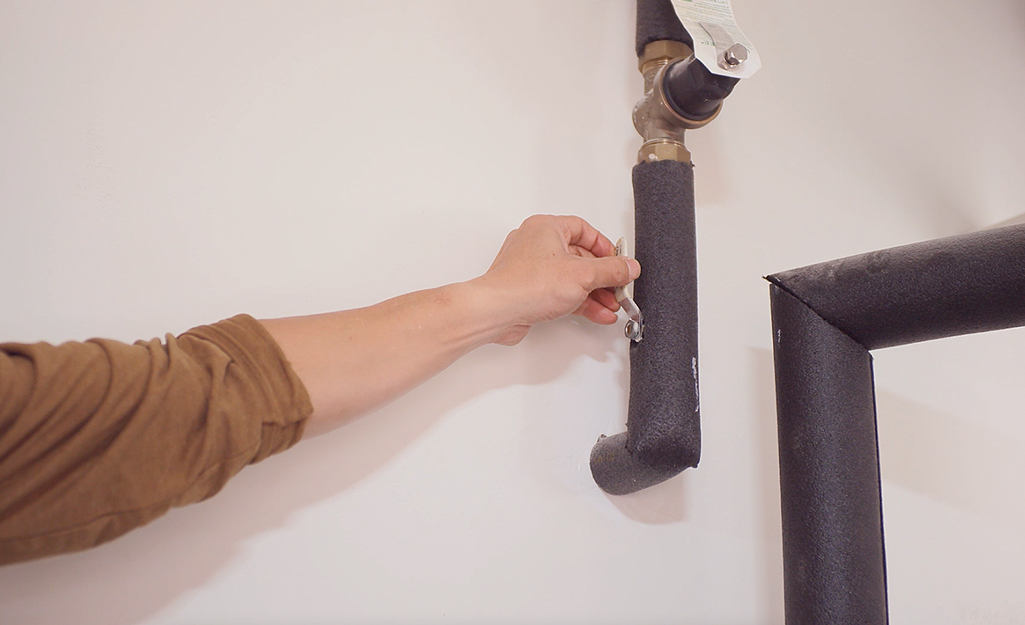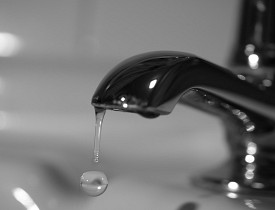Why It's Critical to Resolve a Broken Faucet
Why It's Critical to Resolve a Broken Faucet
Blog Article
What are your opinions about How to Fix a Dripping or Leaky Faucet ?

Trickling taps may feel like a small trouble, but their impact surpasses simply the nuisance of the sound. From wasting water to sustaining unnecessary economic expenses and health threats, neglecting a leaking tap can cause various effects. In this short article, we'll look into why it's vital to address this typical house problem without delay and efficiently.
Wastefulness of Water
Environmental Effect
Trickling faucets contribute significantly to water wastage. According to the Epa (EPA), a solitary tap dripping at one drip per secondly can throw away greater than 3,000 gallons of water per year. This not only stress water sources yet additionally influences communities and wildlife based on them.
Step-by-Step Guide to Taking Care Of a Dripping Faucet
Devices Called for
Prior to trying to take care of a leaking faucet, gather the necessary tools, consisting of a flexible wrench, screwdrivers, replacement parts (such as washing machines or cartridges), and plumber's tape.
Typical Faucet Issues and Their Solutions
Determine the type of faucet and the particular concern causing the drip. Usual problems consist of damaged washers, corroded valve seats, or defective O-rings. Describe maker instructions or on-line tutorials for step-by-step advice on repair services.
Financial Costs
Raised Water Bills
Past the environmental influence, dripping faucets can blow up water bills significantly. The gathered wastage gradually converts into higher utility costs, which can have been avoided with prompt repairs.
Potential Building Damages
Moreover, prolonged dripping can result in damage to fixtures and surfaces bordering the tap. Water buildup can create discoloration, deterioration, and also architectural problems if left unattended, resulting in added fixing expenses.
Health and wellness Issues
Mold and Mold Growth
The constant visibility of wetness from a leaking faucet develops an optimal environment for mold and mildew and mildew development. These fungis not just compromise indoor air quality however likewise posture wellness threats, especially for people with respiratory system problems or allergic reactions.
Waterborne Conditions
Stationary water in trickling taps can come to be a breeding place for germs and various other microorganisms, boosting the danger of waterborne diseases. Contaminants such as Legionella microorganisms grow in stationary water, possibly causing major illnesses when consumed or breathed in.
DIY vs. Specialist Repair service
Benefits and drawbacks of DIY Repair
While some might attempt to deal with a leaking tap themselves, DIY repairs come with their very own collection of obstacles. Without correct knowledge and tools, do it yourself efforts can worsen the concern or lead to insufficient fixings, extending the issue.
Benefits of Working With a Professional Plumber
Employing a specialist plumber ensures that the underlying root cause of the trickling tap is dealt with successfully. Plumbers possess the competence and devices to identify and repair faucet problems effectively, saving time and reducing the risk of further damages.
Ecological Duty
Specific Contribution to Conservation
Taking responsibility for fixing trickling taps straightens with more comprehensive efforts towards water preservation and ecological sustainability. Every individual's activities collectively make a significant influence on protecting priceless sources.
Sustainable Living Practices
By focusing on punctual repair services and adopting water-saving routines, individuals add to lasting living methods that profit both present and future generations.
Safety nets
Regular Maintenance Tips
To stop dripping faucets, do routine maintenance such as cleaning aerators, checking for leakages, and changing worn-out parts quickly. In addition, consider setting up water-saving devices or upgrading to a lot more efficient components.
Significance of Prompt Fixes
Resolving dripping taps as quickly as they're noticed prevents additional water waste and potential damage, eventually saving both water and money over time.
Effect On Residential Or Commercial Property Value
Perception of Well-Maintained Home
Maintaining a property in good condition, including attending to maintenance issues like dripping faucets, improves its viewed value and value among potential buyers or lessees.
Impact on Resale Value
Residences with well-kept plumbing fixtures, including taps, command higher resale values in the realty market. Dealing with dripping taps can contribute to a favorable impression during residential or commercial property examinations and settlements.
Verdict
Dealing with a trickling faucet exceeds plain convenience; it's an important step toward preserving water, reducing financial expenses, and guarding health and residential property. Whether via do it yourself fixings or professional assistance, acting to take care of leaking taps is a little yet impactful means to promote responsible stewardship of sources and contribute to a much healthier, a lot more lasting future.
How to Fix a Dripping or Leaky Faucet
A leaking faucet is one of the most common problems that homeowners encounter, but it being commonplace doesn’t make it any less annoying. The constant drip drip drip of a leaking bathtub faucet, showerhead, or sink tap can disturb your home’s serenity. Left neglected, a dripping faucet can also result in higher water bills and discoloration or mold growth in your sink or plumbing fixtures.
Fortunately, you don’t have to be a trained plumber to know how to stop a dripping faucet. With some basic tools, replacement parts, and a little patience, leaky faucet repair is a breeze. In this article, we’ll explain what causes dripping faucets and how you can fix them.
What Causes a Leaking Faucet?
Kitchen and bathroom faucets come in all manner of designs, but most involve some combination of valves, O-rings, seals, and washers. The O-ring is usually the weakest link, but any one of these pieces can wear down over time. Heat, moisture, temperature fluctuations, minerals, mold, and movement can contribute to warping and corrosion, breaking the watertight seal. This just comes with the territory of being a homeowner. Everything is always subject to wear and tear, and some component parts of your appliances and fixtures need to be replaced on occasion. At least replacement O-rings are cheap!
More rarely, dripping faucets can be a symptom of excessively high water pressure. Were this the case in your home, you would probably notice that the leak is not isolated to one faucet. Water pressure issues are harder to resolve on your own. We recommend contacting a professional plumber if you suspect your water pressure is too high.
How to Fix a Dripping Faucet
Pipe wrench or monkey wrench Allen wrench set Screwdrivers Old towel or rag Shut off the water.
Before you do anything, you need to turn off the water to keep from drenching your kitchen or bathroom. You should find a valve under the sink and against the wall. Once you’ve turned this valve, try turning the faucet on to confirm that the water source has been cut off.
If you can’t locate your local valve for the faucet you’re working on, you can always shut off the water to the house at the main valve. Of course, this will prohibit anyone from using the sinks, showers, or toilets while you’re working on the faucet that’s giving you trouble.
Plug or block the drain.
You’ll be disassembling the faucet and removing some small bits of hardware. Plug the drain with a stopper or rag to avoid the possibility of a small screw falling into your P-trap.
Take apart the faucet assembly.
There are several varieties of kitchen and bathroom faucets, each with its own manner of assembly. For detailed instructions on how to disassemble your faucet, you can refer to the fixture’s manual or contact the manufacturer. If you know whether you have a ball, disc, cartridge, or compression faucet, you can find detailed schematics online.
In general, you need to begin by removing the faucet handles. You might notice a small screw that you’ll need to remove with a screwdriver or Allen wrench. If you don’t see any visible securing hardware, it’s likely hidden under a decorative cap that can be unscrewed or popped off with flathead screwdriver.
Remove each piece methodically, consulting a schematic when necessary. Take notes or arrange the pieces in such a way to make it easier to correctly reassemble the faucet later.
Remove the cartridge.
Once you’ve removed the handles and securing hardware, you should be able to remove the valve cartridge or stem. Some cartridges will slide right out. Other faucet models will require you to loosen a nut with a pipe wrench before you can remove the valve stem.
Examine the exposed hardware.
With the cartridge or stem removed, inspect the component parts. Check the rubber O-rings for wear and tear. Also examine the seat washer for corrosion or other damage. These pieces are usually the responsible parties for a dripping faucet, but it’s worth inspecting the other component parts while you have the faucet disassembled.
Find replacement parts.
Once you’ve identified which faucet component has failed, find an identical replacement. Your local hardware store should have O-rings, seat washers, and other standard components in stock. If you have a luxury or uncommon faucet, you may have to contact the manufacturer for a replacement part.
It’s a good idea to take your old parts with you to the hardware store so you can compare them with the store’s inventory and be sure you’re purchasing the correct replacement.
Reassemble the faucet.
With your new parts in hand, reconstruct the faucet and handles. Don’t be tempted to overtighten screws or nuts. You might think this could create a better seal, but it can instead damage or bend a delicate part of the assembly and create a new problem for you.
Turn on the water and test the faucet.
The only thing left to do is test your work. Unplug the sink, turn the water back on, and try the faucet. Congratulate yourself on a job well done!
https://www.libertyhomeguard.com/how-to-fix-a-dripping-or-leaky-faucet/

Hopefully you enjoyed reading our section on 4 Common Reasons for a Leaky Faucet. Thank you so much for taking time to read through our piece of content. Don't hesitate to set aside a second to share this blog posting if you appreciated it. Thanks a lot for taking the time to read it.
Report this page